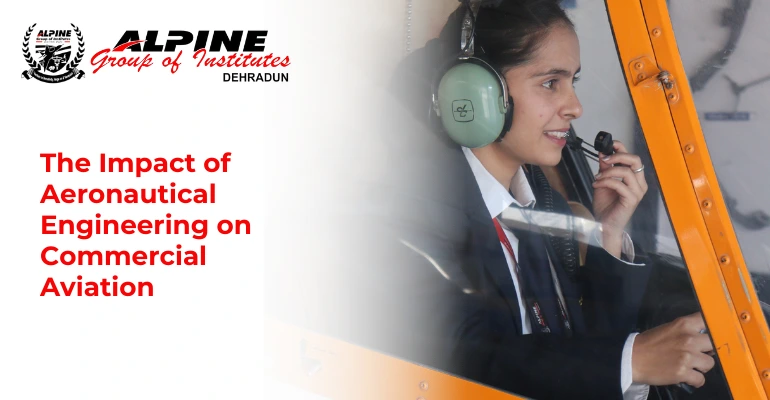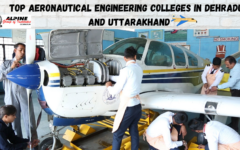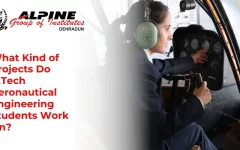The Impact of Aeronautical Engineering on Commercial Aviation
2024-12-17 7:07The Impact of Aeronautical Engineering on Commercial Aviation
Aeronautical engineering plays a crucial role in shaping the commercial aviation industry, continuously driving innovations that improve air travel in terms of efficiency, safety, and comfort. Over the decades, the contributions of aeronautical engineers have been instrumental in revolutionizing how we fly, making air travel more accessible, affordable, and safer.
1. Enhanced Aircraft Efficiency
One of the key contributions of aeronautical engineering to commercial aviation is the dramatic improvement in aircraft fuel efficiency. Through advancements in aerodynamics, materials science, and propulsion systems, modern aircraft are significantly more fuel-efficient than their predecessors.
- Aerodynamics: The design of modern aircraft has become more streamlined, reducing drag and improving fuel efficiency. Techniques such as winglets, which reduce vortex drag, and supercritical wings that improve airflow characteristics have played a pivotal role in enhancing the aerodynamic performance of commercial jets.
- Lightweight Materials: The use of advanced materials such as carbon fiber composites has drastically reduced the weight of aircraft without compromising strength. Lighter aircraft require less fuel, translating into reduced operational costs and lower emissions.
- Engine Technology: Modern turbofan engines, such as those found on the Boeing 787 and Airbus A350, are more fuel-efficient and quieter than older engines. These engines are designed to burn less fuel and produce fewer emissions, contributing to the overall sustainability of air travel.
2. Improved Safety Standards
Safety is the cornerstone of the aviation industry, and aeronautical engineering has significantly advanced the safety of air travel. Innovations in aircraft design, materials, and technology have resulted in stronger, more resilient aircraft that can withstand extreme conditions and handle emergencies more effectively.
- Structural Integrity: Modern aircraft are designed with redundancy in mind. Critical systems, such as hydraulics, electrical, and avionics, are duplicated or triplicated to ensure that a failure in one system does not compromise the entire operation. This level of design foresight is a direct result of advances in aeronautical engineering and is one of the reasons air travel is considered one of the safest modes of transportation.
- Advanced Avionics and Automation: The integration of cutting-edge avionics systems in commercial aircraft has enhanced flight safety. Modern aircraft are equipped with automated flight control systems that help pilots navigate and respond to potential hazards more efficiently. For example, systems like Automatic Dependent Surveillance-Broadcast (ADS-B) improve air traffic control and collision avoidance.
- Crashworthiness: Aeronautical engineers have also made significant strides in improving the crashworthiness of aircraft. The development of crumple zones, reinforced cockpit areas, and improved seat designs has made commercial airliners much safer in the event of an accident. Innovations in fire-resistant materials have also improved the chances of survival during an emergency.
3. Increased Comfort for Passengers
Comfort is a critical aspect of the commercial aviation experience, and aeronautical engineering has continuously worked to enhance passenger comfort in the face of longer flights and larger aircraft.
- Cabin Pressure and Air Quality: Engineers have made significant strides in cabin pressurization, maintaining optimal altitude pressure and air quality. Newer aircraft, such as the Boeing 787 Dreamliner, are equipped with higher cabin altitudes, better humidity control, and quieter interiors, reducing passenger fatigue on long-haul flights. This has revolutionized the way people experience extended air travel, especially on international routes.
- Noise Reduction: Aeronautical engineers have worked on reducing the noise level inside the cabin. New materials and advanced engine technologies have led to quieter engines, while the design of the aircraft’s fuselage and wings helps reduce noise pollution both inside and outside the aircraft. Passengers can now enjoy a more peaceful flight experience, contributing to their overall comfort.
- Ergonomics and Interior Design: The use of ergonomically designed seats, better lighting, and more spacious cabins has also improved passenger comfort. The design of the modern aircraft interior takes into consideration factors such as legroom, seat recline, and cabin layout, creating a more enjoyable experience for passengers during long flights.
4. Sustainability and Environmental Impact
In recent years, aeronautical engineers have focused on making commercial aviation more sustainable. The aviation industry is one of the largest contributors to global carbon emissions, but ongoing innovations aim to reduce this footprint.
- Alternative Fuels: Research into sustainable aviation fuels (SAFs) is one of the most promising areas of aeronautical engineering. SAFs, made from renewable resources, emit significantly fewer carbon emissions compared to traditional jet fuels. Several airlines have already started to test and use these fuels in an effort to reduce their environmental impact.
- Electric and Hybrid Aircraft: Another exciting area of research is the development of electric and hybrid aircraft. While these technologies are still in their early stages, aeronautical engineers are working on small, battery-powered planes for short regional flights. The goal is to reduce fuel consumption and emissions, contributing to the overall goal of sustainable aviation.
- Green Aircraft Design: Engineers are constantly improving the design of aircraft to reduce their environmental impact. This includes using lightweight materials, optimizing aerodynamics to reduce fuel consumption, and designing more energy-efficient engines. These improvements are critical in helping the industry meet global carbon reduction targets.
5. Faster Travel and New Aircraft Concepts
Aeronautical engineers are also at the forefront of efforts to reduce flight times and develop new types of aircraft that can travel faster and more efficiently.
- Supersonic Flight: Aeronautical engineers are working on reviving supersonic travel, which was once the hallmark of the Concorde. New designs are being tested that aim to overcome the challenges of high-speed flight, including noise and fuel consumption. Supersonic flight could dramatically reduce travel time, making global travel even more efficient.
- Urban Air Mobility (UAM): Another frontier for aeronautical engineering is the development of electric vertical take-off and landing (eVTOL) aircraft. These aircraft, commonly referred to as flying taxis, could revolutionize urban transportation by enabling rapid, short-distance flights in crowded cities.
Conclusion
The impact of aeronautical engineering on commercial aviation is profound, from making air travel more fuel-efficient and safer to improving the passenger experience. Engineers continue to push the boundaries of technology, driving sustainability efforts and developing new innovations that promise to shape the future of air travel. As the aviation industry evolves, it is clear that the role of aeronautical engineers will remain central to creating a safer, more efficient, and comfortable air travel experience for generations to come.









